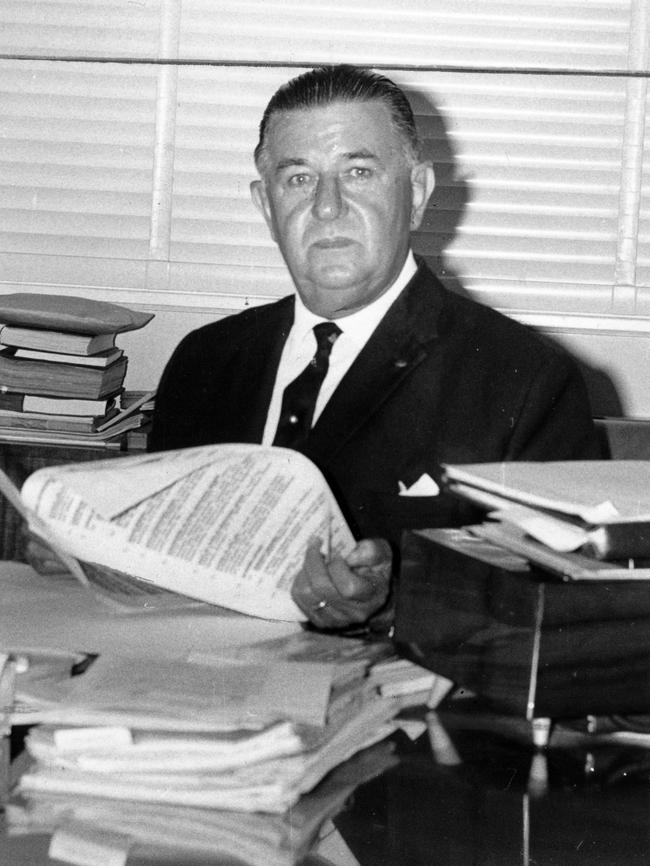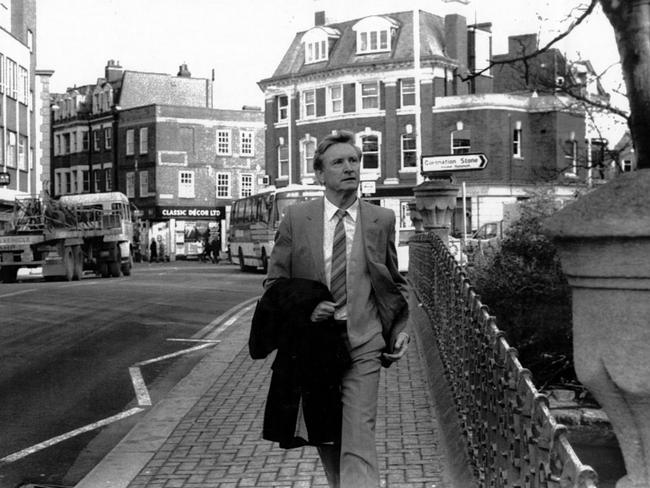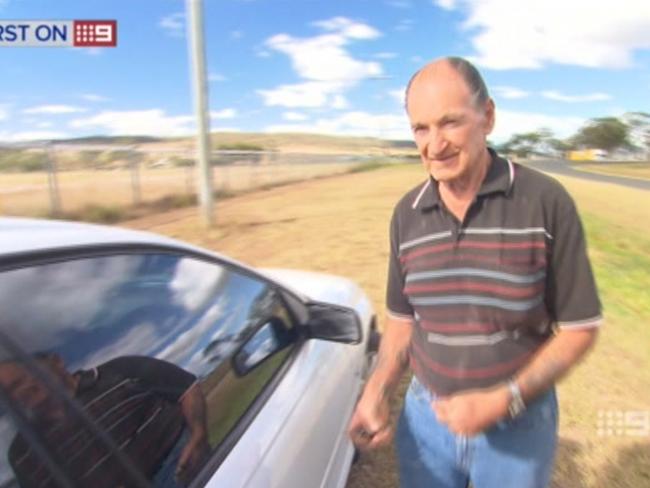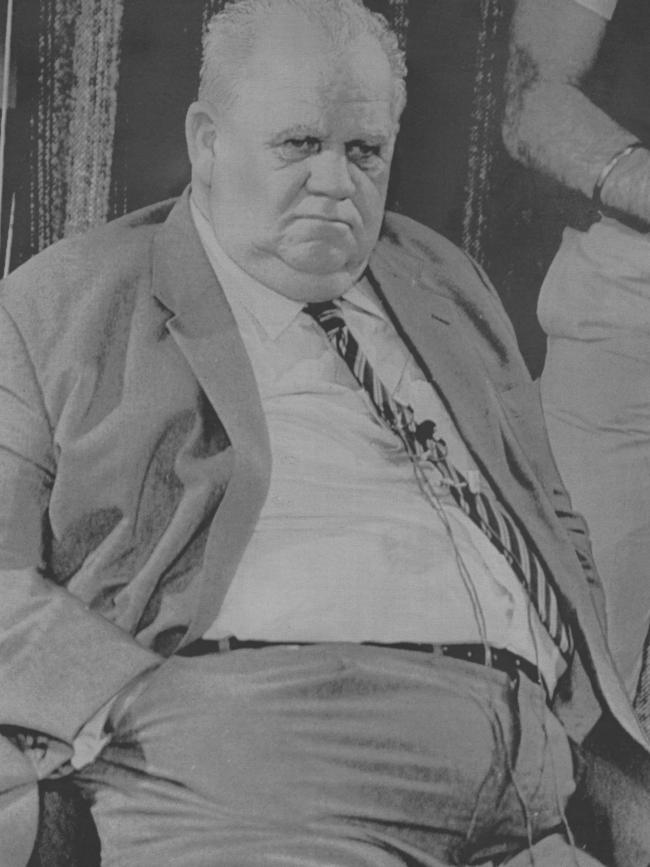Fitzgerald Inquiry 30 Years On: The ones it nailed and those that got away
Even 30 years on, you can’t look at the Fitzgerald Inquiry and what it achieved without bumping into some stunning statistics. But did it miss some big fish? Who, through fate or design, avoided getting tangled in those impressive stats?
True Crime
Don't miss out on the headlines from True Crime. Followed categories will be added to My News.
EVEN 30 years on, you can’t look at the Fitzgerald Inquiry and what it achieved over a two-year period without bumping into some stunning statistics.
But did the Fitzgerald Inquiry net miss some big fish? Who, through fate or design, avoided getting tangled in those impressive statistics?
The commission held public sittings on 238 days, with 131 individuals and organisations represented by 108 legal figures. A dozen people represented themselves. It received about 70 written submissions and 339 witnesses appeared.
“All evidence was heard in public sittings, apart from a brief sitting at which former assistant commissioner Graeme Robert Joseph Parker first admitted his involvement in corruption,” the final report said.
Many who gave key evidence to the Fitzgerald Inquiry have gone to their grave
Secret premiere for a Premier: Copy of Fitzgerald Inquiry report ‘fell off the back of a truck’
Fitzgerald inquiry: Where are key figures now?
There were 2304 exhibits amounting to more than 200,000 pages, and only a few were restricted. The inquiry transcript came out at 21,504 pages.

While the terms of reference of the inquiry were extended twice, Fitzgerald and his team had the right to inquire into anyone or anything that interested them.
In addition to the witnesses who appeared in open court, many who were not called surrendered information to the commission.
In the wash-up, disgraced Queensland police commissioner Terry Lewis received a 14-year jail term for corruption. Other police found guilty of corruption and incarcerated included the former head of the Licensing Branch Allen Bulger. Several were granted immunity for their testimony.
Local crime figures also went to jail, including Hector Hapeta, Ann Marie Tilley, Vittorio Conte and Geraldo Bellino.


And Bjelke-Petersen government ministers – Don Lane, Brian Austin and Leisha Harvey – also did time. The “Minister for Everything”, Russ Hinze, died before criminal charges could be levelled against him.
But did the Fitzgerald Inquiry net miss some big fish? Who, through fate or design, avoided getting tangled in those impressive statistics? Former assistant police commissioner under Lewis, Tony Murphy, strenuously denied any wrongdoing and was never charged. But he was the so-called “grey ghost” behind much police corruption going back to the 1950s and another corrupt commissioner Frank Bischof.

Murphy was often named as a part of the almost mythical “Rat Pack” of corrupt police during Bischof’s reign in the 1960s, as was Lewis and Glendon Patrick Hallahan. Hallahan resigned from the force after corruption charges were levelled against him in the early 1970s. He too avoided repercussions from the inquiry, despite the fact that he had been linked to several crimes, including a major heroin importation in the late-1970s.
His alleged partner in that importation, a former judge’s associate by the name of John Edward Milligan, and a large-scale importer of Buddha sticks and heroin, also didn’t get a mention in the Fitzgerald proceedings.

In an interview with Federal Narcotics Bureau officer John Shobbrook in late-1979, Milligan went into extensive detail about Murphy and Hallahan and other aspects of the corrupt network known as The Joke, and implicated senior police in major national and international crimes.
Another glaring absentee from Fitzgerald’s roll-call of crooked players was Vincent O’Dempsey. O’Dempsey, now in jail for life over the murders of Barbara McCulkin and her two daughters in 1974, associated with corrupt Queensland police for decades from the early-1970s.
He was an integral part of the Brisbane vice scene, overseeing prostitution and massage parlours.
He was also connected to the blossoming drug trade from the late-1970s.

O’Dempsey was also linked to the disappearance of several key figures, including prostitute Margaret Grace Ward, brothel madam Simone Vogel, and low-level crook Raymond “Norman The Doorman” Ford. During his committal hearing and trial proper for the McCulkin murders, O’Dempsey was named as one of the perpetrators of the Torino nightclub bombing in early-1973. He has also been linked to the Whiskey Au Go Go nightclub firebombing in Brisbane’s Fortitude Valley in March 1973 that killed 15 people.
At the conclusion of O’Dempsey’s murder trial in 2017, the Queensland Government ordered a fresh inquest into the mass murder. It is expected to be heard before the end of this year.


Any scrutiny of O’Dempsey would have exposed potential links to the Sydney underworld and its own cabal of corrupt cops, gangsters and hitmen.
Serious drug trafficking did not find a place under the Fitzgerald umbrella, despite the arrest of Mr Asia drug syndicate head Terrance John Clark by Queensland police in 1978.
Fitzgerald and the then Ahern government, at the conclusion of the Queensland inquiry, and after two long years, wanted to set in motion instruments of reform as soon as possible.
The Fitzgerald Inquiry wasn’t and couldn’t have been the instant panacea to all of the state’s crime and corruption ills.
As Fitzgerald himself indicated, the inquiry could have gone on for a century and not missed a beat.
The big criminal names cited in the report were shocking enough. In hindsight, the monikers left out are just as shocking, if not more so.
Originally published as Fitzgerald Inquiry 30 Years On: The ones it nailed and those that got away


